Contents
- 1. The sciences connected with the mind and the science of Spirituality
- 2. Amount of the Absolute Truth in other subjects and Spirituality
- 3. Physical sciences and the science of Spirituality
1. The sciences connected with the mind and the science of Spirituality
The relationship of the science of Spirituality with reference to various sciences of the mind is given in a tabular form with comparison of various methods of treatment in a patient with high blood pressure induced by anxiety, below:
| Treatment modality |
Who administers the treatment? |
site of action |
Special features | Cure rate % |
Recovery* |
| A. Intellectual The technique is important |
|||||
| 1. Shavasan (corpse posture) |
Yoga teacher |
Mainly the body and the conscious mind |
The patient is not taught how to face the anxiety provoking situations. Hence the treatment has to be continued. |
10 | Temporary |
| 2. Drugs to lower the blood pressure |
Physician | Nerve endings |
“ | 30 | “ |
| 3. Drugs to reduce anxiety |
Psychiatrist | Brain | “ | 30 | “ |
| 4. Psychothera- py (discussion , counselling, etc.) |
Psychother- apist |
Conscious mind |
As the patient is tau- ght how to face anxi- ety provoking situat- ions incidentwise, personality does not change completely & treatment has to be continued off & on. |
50 | For some time |
| 5. Psychoana- lysis |
Psychoana- lyst |
Subconscio- us mind |
After some years, personality of some individuals changes markedly and they are able to face most anxiety provoking situations. Consuently , their chances of suffering from high blood pressure again, are reduced. |
10 | Mostly permanent |
| 6. Hypnotherapy | Hypnother- apist |
Subcons- cious mind |
Personality of several individuals improve markedly within a year. Thereafter, they are able to face anxi- ety provoking situati- ons. As a result, the chances of recurrence of high blood pressu- re are very low. |
50** | Mostly permanent |
| B. Beyond intellect (spiritual practice): |
|||||
| The technique is not important, but it is the spiritual energy in the one recommending the treatment which is of importance. |
Spiritually evolved individual |
A. Subtle and causal bodies B. Raja and |
A. Within a few years , personality of most individuals changes completely. Thereafter they are able to face anxiety provoking situations. Hence, the chances of recurrence of high blood pressure are very rare. B. Factors beyond |
2** | Permanent |
* Temporary (as long as treatment continues) / for sometime / permanently.
** Though these modalities of treatment are good, the number of those who recover is very less because often the patient discontinues treatment / spiritual practice midway.
The difference between psychotherapy devoid of divine consciousness (chaitanya) and Spirituality endowing divine consciousness will be illustrated by the following examples.
-
A. A girl was in love with a boy. Rationally, theirs was a mismatch. After treating her with hypnotherapy for a year she finally abandoned the idea of marrying him. Here the Vaikhari mode of speech was used to convince the girl.
-
B. A patient constantly feared that he would die of a heart attack. The moment he was told that he would live for another 35 years his fear vanished. Otherwise to cure him through hypnotherapy it would take at least eight to nine months.
2. Amount of the Absolute Truth in other subjects and Spirituality
The table below will illustrate why Spirituality is called paravidya (meaning supreme science) and the other sciences are called aparavidya (inferior sciences).
| Subject | Amount of the Absolute Truth % |
| 1. Stories, novels, poetry, etc. | 0 |
| 2. Physical sciences | 1 |
| 3. Classical dance, classical music, sculpture, etc. |
2 |
| 3. Spirituality | 100 |
3. Physical sciences and the science of Spirituality
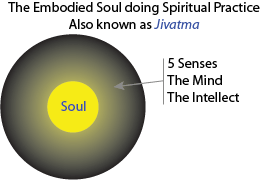 |
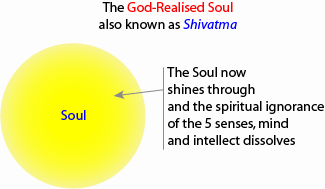 |
‘Science has varied meanings such as specific knowledge, scientific knowledge philosophical knowledge, direct knowledge and knowledge of Brahman. However generally the knowledge which is acquired through the sense organs by analysis and experimentation of gross substances and natural phenomena following a specific order and procedure is called science (vidnyan). In this context, Prof. K.V. Belsare gives the following explanation – the role of science is to study the properties of physical substances, their interactions with one another, the general principles therein and to derive a system with logical explanation from them. The four steps in the methodology used in science are careful observation, classification, framing a hypothesis and deriving inferences from them. Once the properties of substances are studied, their actions can be controlled. Thus, man can control energies such as electricity, heat, light, sound, water, air, etc. and use them to gain mastery over place, time, speed, disease, etc.
Among all the rules in the behaviour of substances in the universe, the rule of cause and effect is common to all. Hence, in science more emphasis is laid on determining the cause and effect relationship between substances. From the scientific point of view all events in the universe are entirely dependent on rules. Nothing in Nature is mysterious or miraculous. Events which appear perplexing, appear so only until one realises the cause and effect relationship between them. With the help of this knowledge, man has invented extraordinary appliances such as the train, the aeroplane, electric lamps, the radio, the telephone, etc. which have dramatically changed his quality of life.
Though with the help of science, man has acquired external prosperity, internally he does not derive the feeling of contentment. Ancient Indian scholars have made attempts to provide society with both external and internal happiness because eventually without internal happiness, external happiness proves to be futile. After the 10th century A.D. the progress of our country came to a standstill because we began to concentrate only on internal spiritual practice. Plenty of discussions in the spheres of devotion and Righteousness (Dharma) continued, but we neglected the field of physical sciences. To add to this we even forgot the knowledge compiled by our ancient sages.’
Today science claims, ‘After visiting Mars we will have crossed a great milestone in the annals of science and will know if there is existence of life there, etc.’ In Spirituality, visiting Mars by the subtle body and returning to the earth is only a ‘snake-charmer’s game’ or simply ‘purification of the mind (chitta)’.
‘If devices to record such subtle events are invented then at the most they will be useful for documentation and not for endowing the actual experience. Whereas, it is important to actually experience them. If scientists discover the blue dot with the aid of scientific devices, they will accept its existence, contemplate on it for several years, hold discussions and write theses on it. But it is more important to meditate and get introverted so as to actually experience the blue dot than to do all this. You will undergo a total tranformation due to this experience. Internally one will be endowed with Bliss, will be able to hear divine music and will be able to acquire supernatural powers such as divine vision, hearing heavenly messages, etc. There will be a flow of divine nectar (amrut) from the absolute ether (akash) element within.’ It is for this alone that physical sciences is the first step in the learning process while Spirituality is the final one.
‘People complain that faith (shraddha) has declined due to modern science. Despite that curiosity about Spirituality has increased. What does decline in faith actually mean? Or what exactly is faith? Can blind and naive belief be considered as faith?
Here, it becomes necessary to explore into the basic nature of faith, as described in the Nirukta holy texts. The author, Vachaspati has defined faith as ‘the strength to support the truth’. If one understands this concept, then the distinction between faith and rationalism will be destroyed. Today, when one says that curiosity about Spirituality has increased it is as if faith itself has been augmented. The intellect aroused by curiosity ‘grasps’ knowledge and faith strengthens that knowledge. There is faith where there is curiosity about Spirituality and knowledge. Curiosity about Spirituality (jidnyasa) and a desire for the Final Liberation (mumuksha) are both complementary to each other in all aspects.’
According to the holy text, Shri Dasbodh the meaning of science (vidnyan) is as follows:
साक्षत्व वृत्तीचें कारण । उन्मनी ते निवृत्ति जाण ।
जेथें विरे जाणपण । विज्ञान तें ।। ७.४.५०
जेथें अज्ञान सरे । ज्ञान तेंहि नुरे ।
विज्ञानवृत्ति मुरे । परब्रह्मीं ।। ७.४.५१
Meaning: The stance of a spectator is the action of the subconscious mind (chitta). Going beyond the mind (unmani), that is beyond the stance of the spectator is non-action (nivrutti). Where the awareness [absolute ego (ahambhav)] that I am the knower dissolves, is pure knowledge (vidnyan). – 7.4.5
At the level of Parabrahman both ignorance and knowledge disappear. Even the pure knowledge (vidnyan) dissolves. [Only non-duality (advait) persists.] – 7.4.51
Why the science of Spirituality and not the physical sciences are useful for making spiritual progress will be clear from the following table.
| Physical sciences | Spirituality | |
| 1. Origin | Western countries | Eastern countries |
| 2. What is it called? |
Information Experiences |
Spiritual knowledge Spiritual experiences |
| 3. What is that which perceives the information/ spiritual knowledge called? |
Embodied soul (jiva) | Inferior spiritual knowledge – Embodied soul undertaking spiritual practice (jivatma) Superior spiritual knowledge |
| 4. What is the information / spiritual knowledge about? |
Gross things such as the |
Initially – Subtle fragrance, subtle sound, etc. so also subtle things such as aura, frequencies, etc. Finally – The soul (atma) |
| 5. From where is the information/ spiritual knowledge obtained? |
Externally. The five sense organs, mind and intellect too are external with respect to the embodied soul. |
Initially from the Guru and later from within. The embodied soul undertaking spiritual practice and the God realised soul acquire spiritual knowledge from within, that is from the soul. |
| 6. Medium of obtaining information / spiritual knowledge |
Information is acquired externally through the five senses and internally through the mind and intellect. |
Knowledge is realised with the sixth sense organ that is the embodied soul underta- king spiritual practice and the God realised soul. |
| 7. Difference in meaning |
Absent | May be present, for instance the implied meaning is inter- preted differently by indivi- duals at different spiritual levels. |
| 8. What are they connected with? |
A. Great Illusion (Maya)** |
Brahman (God principle), the soul (atma) |
| B. Ignorance | Spiritual knowledge | |
| C. Objects containing the three components (trigun) |
Objects beyond the three components (trigunatit) |
|
| D. As Brahman exists in unlimited forms in the Great Illusion, e.g. in food, speech, sound, etc. the subjects are endless. |
The sole subject is the |
|
| E. Gross | Subtle | |
| F. Entire creation | The Creator of everything | |
| G. Things which undergo dissolution |
The eternal Brahman | |
| H. Psychology is one of the branches of science in which the subconscious mind is studied with the objective of eliminating unhappiness. |
The universal mind, Brahman is studied in order to attain Bliss. |
|
| 9. Objective | Achieving temporary happiness |
Attaining eternal Bliss |
| 10. Methodology | A. Understanding the difference between various objects |
Perceiving the similarities or oneness between various objects. |
| B. Relative to an object: Relative to place, time and object. Hence it has limitations of place and time. |
Unrelative to an object: Not relative to place, time and object as everything is nothing but Brahman (God principle). |
|
| C. Dependent on the object (place, time and the object are required) |
Independent of the object (place, time and the object are not required) |
|
| 11. State in which information / spiritual knowledge is acquired |
Waking state | A. Superconscious state (samadhi) B. Natural state of commun- ion with God (sahajavastha) C. Liberation when still embodied (sadeha mukti) |
| 12. New creation | Impossible. Highlighting what already exists or changing it. |
Possible |
| 13. Awareness of the body (dehabuddhi) |
Present | Absent |
| 14. Duality / non-duality |
There is duality between intellect and information |
Since the one in pursuit of Brahman merges into It, there is non-duality (advait) |
| 15. Happiness and unhappiness |
Science can give a lot of happiness to man but cannot always save him from unhappiness, e.g. a television set, air conditioner, etc. give happiness but when they break down man becomes unhappy. |
Spirituality never gives unha- ppiness. One gets worldly happiness from spiritual pra- ctice done with expectation (sakam sadhana) whereas one can attain supreme hap- piness (Bliss) with spiritual practice done without expec- tation (nishkam sadhana). |
| 16. Duration of the experience/ spiritual experience |
A. Short | Depends upon the duration of the superconscious state, continuous in the natural state of communioun with God and eternal in Liberation (Mukti) |
| B. Whatever is learnt through experience in this birth has to be learnt again in the next, for example, writing, reading, etc. |
Whatever is learnt through spiritual experiences in this birth is carried forward to the next one. |
|
| 17. Quality | Inferior*** | Supreme |
| 18. Extent | Limited*** | Unlimited |
| 19. Complete / incomplete and truth / untruth |
The ‘truth’ in science constantly undergoes changes. Hence, editions of books require improvisation. In brief, science is incomplete and untrue. |
The knowledge of the soul principle never changes. The truth found in Spirituality is eternal and beyond time. Hence, the Vedas, Upanish- ads, etc. have reprints but no revised editions. |
| 20. Additions | There are additions to scientific information. |
Spiritual knowledge does not have additions. |
| 21. End | Occurs, e.g. when it is discovered that all types of energies are created from a single energy, it will be the end of physics. After the discovery of that basic element from which all elements are created, it will be the culmination of chemistry. |
Does not occur |
| 22. Boredom | May occur | Does not occur |
| 23. Contentment | Temporary, as after realising one ‘truth’ one feels like knowing the next. |
Present. After one acquires the ultimate spiritual experie- nce of Self-realisation, nothi- ng more is left to be experie- nced. Hence, one experien- ces the Bliss of contentment. |
| 24. Definition | ‘विगतं ज्ञानं यस्मात् तत् ।’ means, that from which knowledge (dnyan) has departed is science (vidnyan), is how the word science can be humorously but meaningfully defined. |
‘सा विद्या या विमुक्तये ।’ means only that which liberates is called spiritual knowledge (vidya / dnyan). This spiritual knowledge is acquired only through the science of Spirituality. |
| 25. Fame | Occurs fast, as it is useful in day-to-day life. |
Occurs slowly, as there is hardly any connection with day-to-day life. |
| 26. Relation with other subjects |
Absent | All subjects including the physical sciences are a part of Spirituality. |
* The embodied soul undertaking spiritual practice (jivatma) is one which has experienced a little of the soul principle (atmatattva) to some extent. Rather it is the embodied soul (jiva) which has got inferior type of spiritual experiences. Inferior spiritual experiences are related to the five subtle sense organs, mind and the intellect e.g. experiencing fragrance in the absence of an incense stick, knowing the answer to a query. The God realised soul (Shivatma) is one which has almost blended with God (Shiva) that is, the embodied soul which has got superior type of spiritual experiences. Superior spiritual experiences are in relation to higher supernatural powers (siddhi), Bliss (Anand) and Serenity (Shanti).
** Hence this is like running after a mirage. The truth is never found in it.
*** ‘The physical sciences are incomplete in one sense as at any given point of time some of its questions remain unanswered. If ever they are solved then new questions arise.’ – Mr. Jayant Naralikar, Maharashtra Times, 24th March 1991.
The difference between the physical sciences and Spirituality can be explained in simple language thus – The physical sciences cannot explain how to attain Bliss (Anand) which only the science of Spirituality can. It is only the science of Spirituality which teaches one to observe the problems in day-to-day life and unhappy events, e.g. a loss in business, death of a near one, etc. with the stance of a spectator (sakshibhav) and attain Bliss, something which none of the modern sciences can do.
Reference: ‘Spirituality’, published by Sanatan Sanstha.

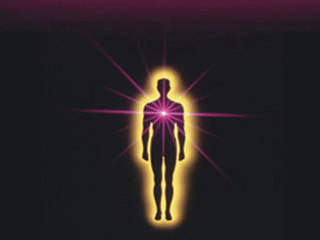
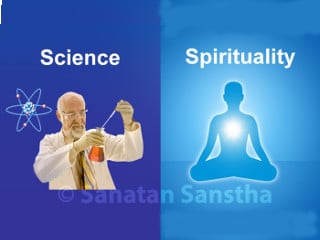 Physical sciences and the science of Spirituality
Physical sciences and the science of Spirituality Obstacles faced when studying Spirituality
Obstacles faced when studying Spirituality Importance of Spirituality
Importance of Spirituality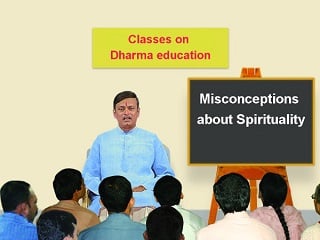 Misconceptions about Spiritual practice ( Sadhana )
Misconceptions about Spiritual practice ( Sadhana )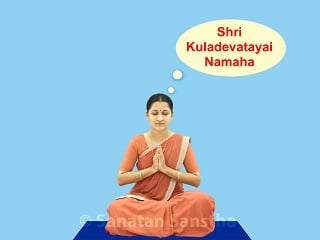 Qualities essential for Spiritual practice ( Sadhana )
Qualities essential for Spiritual practice ( Sadhana )